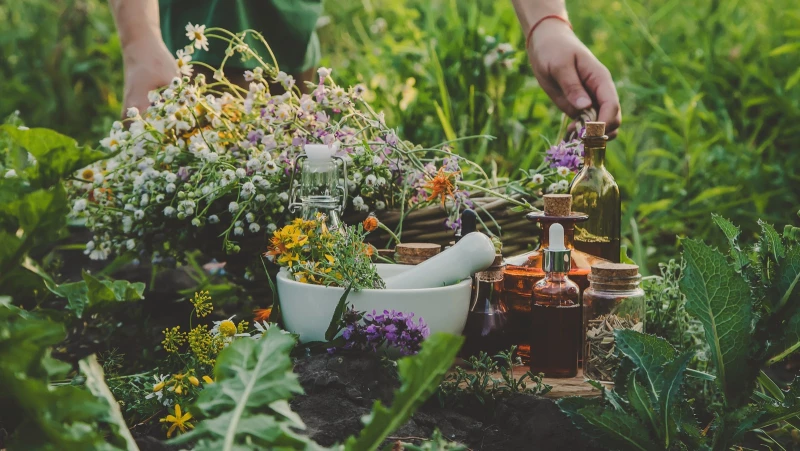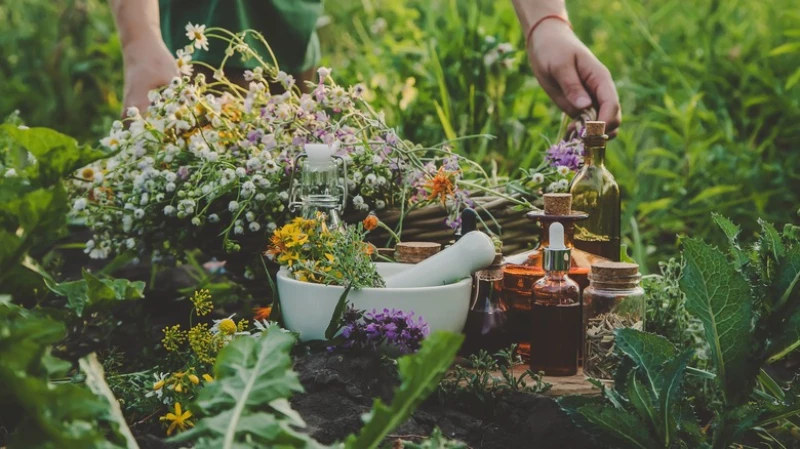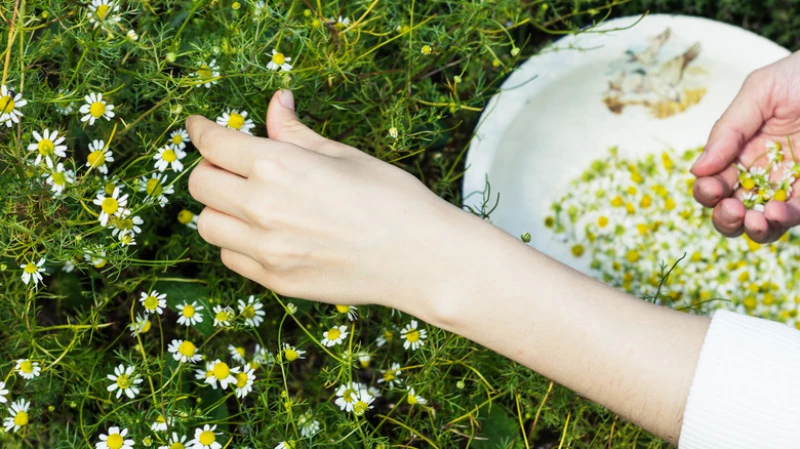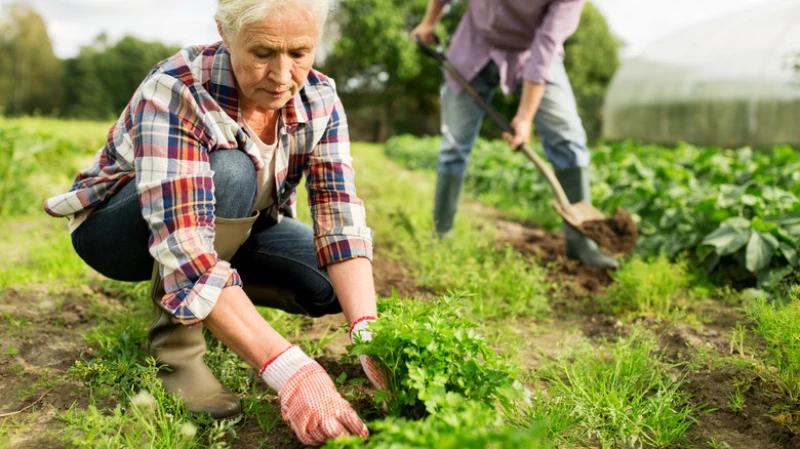Rosemary and Basil: A Clash of Flavors
An herb garden might be a good way to relax while you work in your yard. You can add these little plants to your yard to make it look nicer and make your food taste better. However, you need to know which herbs may stop each other from growing, because not all of them get along. Putting certain herbs together can reduce their qualities, making them less flavorful in your dishes. Also, the struggle these plants have to go through to get the water and nutrients they need to thrive might mean you have to spend more time babying them to get strong growth, which takes your time away from other projects.
To ensure you get strong plants, you have to have a strategy in place during planting. We'll help you figure out herb pairings to avoid and how to plant them for strong growth, ensuring each plant thrives and gives you fragrant, productive herbs.
Chamomile and fennel are both delightful additions to any herb garden, although chamomile may not thrive as an indoor house plant. These two herbs, however, have conflicting root systems and nutrient requirements, making them unsuitable to grow together. Fennel releases substances that can hinder the growth of neighboring plants, while chamomile, although less aggressive, struggles when in close proximity to fennel. Additionally, fennel attracts insects that feed on chamomile and other delicate herbs, resulting in weaker chamomile plants with fewer flowers. Despite both herbs enjoying the same sun exposure, fennel's dominant nature makes them poor companions in the garden.
To address this issue, it is best to plant chamomile and fennel in separate areas of the garden to prevent their conflicting root systems from affecting each other's growth. Consider placing fennel in a location where its dominant nature won't hinder the development of other herbs, and allow chamomile to thrive in a more suitable environment. By understanding the unique needs of each herb, you can create a harmonious garden that promotes the healthy growth of all your plants.
Chamomile does well if you put it with cucumber, sage, and marigolds because these plants help deter common pests that can damage the herb. Fennel grows well with dill because they like the same growing conditions but won't compete. To avoid problems, don't put fennel by vegetables, most herbs, or flowers. You create a balanced garden where each plant can grow strong by pairing these two herbs with the best companions.
Rosemary and basil have different water needs
Rosemary and basil are extremely popular in herb gardens, but planting them close can slow their growth. This is mainly due to the water they need, with rosemary needing well-drained and dry soil that mimics its Mediterranean roots. It loves controlled moisture environments and struggles if the soil is too wet. Basil needs more water to keep the leaves healthy and lush, and it prefers fertile, moist soil. When you plant them close, meeting their differing water needs is challenging. Rosemary is also a strong, woody shrub that can get bushy enough to overshadow basil. It'll block a lot of sunlight, stunting your basil's development and growth, and can overpower basil's lighter scent.
Pair rosemary with drought-resistant plants and herbs like thyme, sage, or lavender. They all have similar soil and water needs, which minimizes competition while encouraging healthier growth. Basil does well planted next to peppers and tomatoes. When you plant them together, basil wards off harmful insects that eat pepper or tomato plants. In return, the vegetables shade the basil and keep the soil moist. You can also plant basil with spinach, lettuce, or cilantro because they all like more water.
Dill and Cilantro: A Clash of Growth Cycles
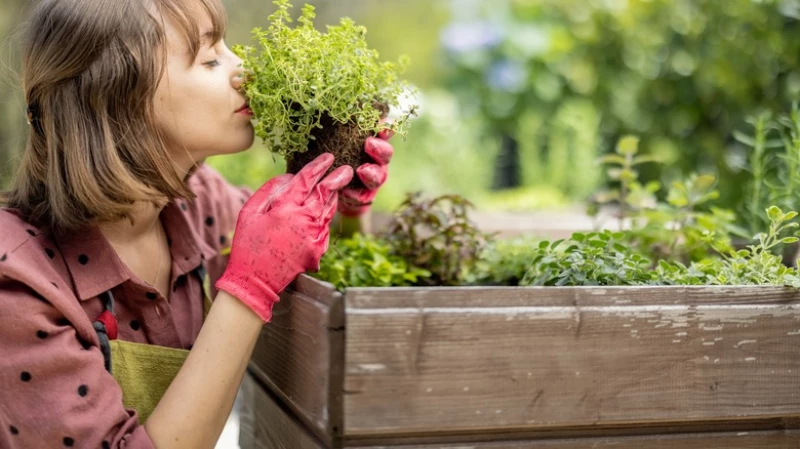
When it comes to planting dill and cilantro together, there are some important considerations to keep in mind. These two herbs have conflicting growth cycles that can impact their development when grown in close proximity.
Dill tends to grow faster and taller than cilantro, which can result in it casting shade over the cilantro plants. This shade can stunt the growth of cilantro, as dill releases allelopathic chemicals that inhibit the growth of nearby plants. Additionally, the root systems of dill and cilantro can clash when planted side by side, limiting the available space for both herbs to thrive.
While dill thrives in fluctuating conditions, cilantro prefers a more stable environment. Trying to accommodate both herbs in a small space can lead to stress and make them more susceptible to pest and disease issues.
However, there are compatible planting options for both dill and cilantro. Dill pairs well with lettuce, onions, corn, and cucumbers, as it can help deter pests without competing for nutrients. On the other hand, cilantro grows harmoniously with carrots and spinach, benefiting from the loose soil and partial shade provided by these companion plants.
Basil and Sage: Not the Best Plant Companions

Basil and sage, while both popular plants, do not make good companions in the garden. Their differing growth requirements can hinder each other's development. Basil thrives in moist, rich soil with plenty of sunlight and requires regular watering to maintain healthy leaves. On the other hand, sage prefers well-drained, slightly sandy soil with less water.
This contrast in growing conditions can lead to a competitive environment where sage's robust growth outshines the basil plants. Sage's strong root system can overpower basil, causing stunted growth. Additionally, the watering needs of basil to thrive can drown the roots of sage due to their preference for drier soil.
To cultivate healthy tarragon and parsley, it is essential to consider their distinct growth requirements. Tarragon, a perennial herb, thrives in well-drained soil under full sun in a dry climate. Its deep roots allow it to access water from deeper soil layers, aiding in drought resistance. On the other hand, parsley, a biennial herb, prefers moist and nutrient-rich soil with regular watering, along with some shade to prevent sun damage. Due to their contrasting water needs, planting them together can lead to water stress for both herbs. Additionally, tarragon has a mild allelopathic effect that can hinder the growth of parsley, particularly in the early stages, thus slowing down germination.
To mitigate these challenges, it is advisable to pair tarragon with plants that share similar water and sunlight requirements. Ideal companions for tarragon include rosemary and lavender, as they thrive in full sun and drier soil conditions. These combinations ensure that the plants do not compete for water or nutrients, simplifying maintenance. Parsley, on the other hand, complements well with asparagus and tomatoes, with the latter providing shade to reduce water evaporation from the soil. Asparagus, benefiting from parsley's pest-repelling properties, also thrives in the slightly wetter environment.
Sage and Fennel: A Comparison of Root Systems
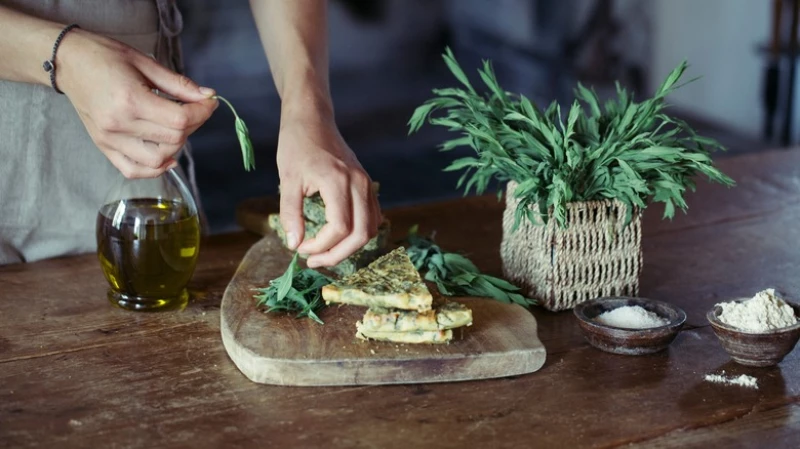
Fennel and sage, two aromatic herbs commonly used in cooking, have distinct root systems that require careful consideration when planting together. Sage, known for its shallow root system, thrives in dry to moderately moist soil with infrequent watering. It prefers full sun and well-drained soil. On the other hand, fennel boasts a deeper root system that allows it to access moisture from lower soil levels, necessitating a richer planting medium.
Due to their differing watering needs, these herbs may compete for resources, leading to stress and reduced growth. Additionally, fennel exhibits allelopathic properties, releasing chemicals that inhibit the growth of surrounding plants, including sage. As a result, planting these herbs in close proximity may hinder the growth and development of sage due to fennel's allelopathic nature.
Thyme and cilantro have incompatible growing conditions. Thyme prefers well-drained soil and full sun, while cilantro thrives in partial shade and moist soil. Planting them together may lead to one or both herbs not reaching their full potential. Thyme is a perennial herb that needs minimal water once established, while cilantro is an annual herb that requires consistent moisture to prevent bolting. Their different watering and sunlight needs make them unsuitable companions in the garden.
To ensure the success of both herbs, consider planting thyme in a separate area with well-draining soil and ample sunlight. Cilantro can be grown in a shadier spot with access to regular watering. Alternatively, plant them in separate containers where you can control the soil moisture and light levels for each herb. By providing the ideal growing conditions for thyme and cilantro individually, you can enjoy a bountiful harvest of both herbs without compromising their development.
Mint and chamomile have different environmental needs. Mint is invasive, using underground runners to spread and can choke out nearby plants like chamomile. Mint likes moist soil and can survive in partial shade, while chamomile needs well-drained soil with more sun. Keeping the soil damp enough for mint to thrive is too wet for chamomile, leading to fungal diseases.
To optimize both herbs, pair mint with basil or oregano because they have similar growing conditions, reducing competition. Mint also does well next to peas or lettuce. Chamomile works better with dill or sage. Dill can attract beneficial insects for chamomile, and sage can provide some shade. Leave some space between each plant to prevent overcrowding.
Lavender and mint: A Tale of Contrasting Watering Needs
Lavender and mint may both be aromatic herbs, but when it comes to watering, they couldn't be more different. Lavender thrives in well-drained soil and prefers to dry out between watering sessions. Overwatering can lead to root rot and ultimately kill the plant. On the other hand, mint loves moisture and needs consistently moist soil to flourish. Planting them together would create a constant battle to meet their individual watering needs.
For a harmonious herb garden, consider placing lavender near rosemary or sage. These herbs have similar water requirements and can create a visually appealing and fragrant corner in your garden. Lavender also pairs well with thyme, as they complement each other's growth habits and watering preferences. Mint, on the other hand, thrives alongside basil or chives, as they all enjoy moist soil and can benefit from each other's proximity.
Coriander and rosemary are well-known herbs in the culinary world, each with its own unique growth needs. While rosemary thrives in hot, sunny environments with well-drained, sandy soil, coriander prefers milder temperatures and thrives in moist, fertile soil that is well-drained and rich in organic matter. When planted together, the dry conditions favored by rosemary can cause stress to coriander, prompting it to bolt to seed prematurely. Furthermore, the robust, woody growth of rosemary can overshadow smaller coriander plants, reducing their access to sunlight.
To ensure optimal growth, it is recommended to plant coriander and rosemary separately. Coriander grows well alongside other herbs like basil and chives, which have similar moisture requirements and can provide shade to the delicate coriander plants. On the other hand, rosemary pairs well with lavender and thyme, as they all thrive in sunny, well-drained conditions and complement each other's growth habits. By understanding and respecting the specific needs of each herb, gardeners can create harmonious and thriving herb gardens.
Companion Planting Tips for Coriander and Rosemary
If you want to ensure a successful growth of coriander and rosemary in your garden, it's important to consider their companion plants. For coriander, beans and spinach are excellent choices as they provide shade, cool the soil, and enrich it, creating the perfect conditions for coriander leaves to flourish. On the other hand, rosemary thrives when planted alongside Mediterranean herbs like thyme, sage, and lavender. These herbs share the same requirements of full sun and minimal water. Additionally, planting rosemary near carrots and cabbage can help protect them from pests, as the strong scent of rosemary acts as a natural repellent.

